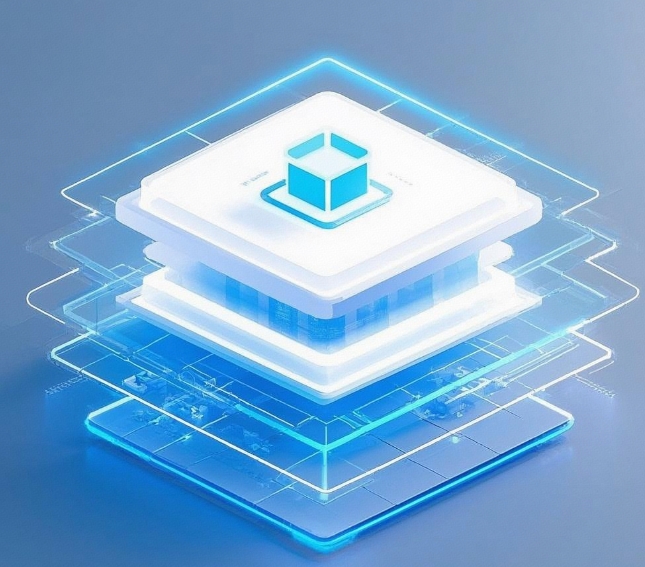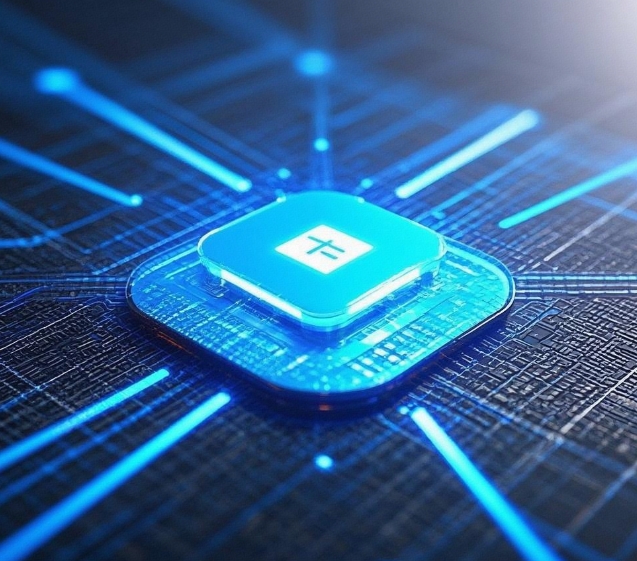How to manage projects and plan processes for IoT development?
- latest articles
- 1.DApp Development & Customization: Merging Diverse Market Needs with User Experience 2.Analysis of the Core Technical System in DApp Project Development 3.How to achieve cross-chain interoperability in Web3 projects? 4.How does the tokenization of points reconstruct the e-commerce ecosystem? 5.How to Set and Track Data Metrics for a Points Mall? 6.What is DApp Development? Core Concepts and Technical Analysis 7.Inventory of commonly used Web3 development tools and usage tips 8.Development of a Distribution System Integrated with Social E-commerce 9.Six Key Steps for Businesses to Build a Points Mall System 10.What is DApp Development? A Comprehensive Guide from Concept to Implementation
- Popular Articles
- 1.Future Trends and Technology Predictions for APP Development in 2025 2.Analysis of the DeFi Ecosystem: How Developers Can Participate in Decentralized Finance Innovation 3.From Zero to One: How PI Mall Revolutionizes the Traditional E-commerce Model 4.DAPP Development | Best Practices for Professional Customization and Rapid Launch 5.How to Develop a Successful Douyin Mini Program: Technical Architecture and Best Practices 6.Recommended by the Web3 developer community: the most noteworthy forums and resources 7.From Cloud Computing to Computing Power Leasing: Building a Flexible and Scalable Computing Resource Platform 8.Shared Bike System APP: The Convenient Choice in the Era of Smart Travel 9.How to Create a Successful Dating App: From Needs Analysis to User Experience Design 10.From Design to Development: The Complete Process of Bringing an APP Idea to Life
The rapid development of Internet of Things (IoT) technology has led to the integration of intelligent elements across many industries and fields, from smart homes to Industrial IoT (IIoT), significantly enhancing production efficiency, data analysis capabilities, and user experience. However, the effectiveness of project management and process planning often determines the success or failure of IoT projects during development. This article delves into how to manage projects and plan processes for IoT development, helping businesses and development teams better tackle this challenging task.
I. Characteristics and Challenges of IoT Development
IoT projects involve a wide range of technical fields, including hardware design, embedded development, communication protocols, data storage, and analysis. Compared to traditional software development projects, IoT development faces more numerous and complex challenges:
Interdisciplinary Nature: IoT projects typically involve not only software development but also knowledge from multiple disciplines such as hardware design, embedded systems, wireless communication technologies, and cloud computing.
High Compatibility Requirements: IoT devices often need to interconnect with devices from different brands and protocols, requiring developers to fully consider technical compatibility and standardization in project management.
Security Issues: IoT devices connect vast numbers of devices and users; a security vulnerability in any link can pose significant risks. Therefore, IoT projects must prioritize data security and privacy protection.
System Complexity: IoT systems generally include multiple components such as hardware devices, communication networks, backend servers, and frontend applications. Precise process management and monitoring are required for the coordination between these components.
II. Basic Principles of IoT Development Project Management
IoT development project management involves numerous and highly complex aspects, making it essential to adopt appropriate management methods and processes. Here are some basic principles in IoT project management:
1. Define Project Goals and Requirements
From the project initiation phase, IoT projects should ensure clarity in objectives. First, discuss and define the core goals and requirements with clients or stakeholders. For example:
What IoT functionalities need to be implemented?
What are the target device types, environments, and usage scenarios?
Which platforms or technologies need to be integrated?
What are the specific requirements for time, budget, and quality?
2. Cross-Functional Team Collaboration
Since IoT projects typically require collaboration among experts from various fields, project managers should form a cross-functional team, including hardware engineers, embedded development engineers, communication specialists, data scientists, UI/UX designers, product managers, etc. Team members must maintain good communication and coordination to ensure smooth progress at every stage.
3. Agile Development and Iterative Optimization
IoT projects often operate in rapidly evolving fields where market demands and technological advancements are constantly changing. Therefore, adopting an agile development model for project management helps teams respond quickly to changes and adjust development directions promptly.
Agile development delivers usable products through short-cycle iterations, gradually accumulating feedback to improve and optimize product features. This approach allows teams to continuously adjust development directions, avoiding delays or failures due to changing requirements or technical challenges.
4. Risk Management
IoT projects encounter various unforeseen risks during development, such as hardware failures, software compatibility issues, and technical bottlenecks. Therefore, project managers need to conduct detailed risk assessments early in the project and develop strategies to address potential risks. For example:
Identify key technical risks and set reasonable technical feasibility assessments.
Conduct regular technical reviews during the project to ensure progress and quality meet expectations.
Develop emergency response plans for potential security vulnerabilities and system crashes.
III. Process Planning for IoT Development
In the development process of IoT projects, process planning is key to ensuring timely delivery and meeting quality requirements. An efficient process plan helps teams allocate resources better, schedule time reasonably, and improve collaboration efficiency. Below is a common development process for IoT projects:
1. Requirements Analysis and Function Planning
At the initial stage of the project, requirements analysis is essential. The development team and clients need to work closely together to understand the background of the requirements in detail, clarify project goals, scope, and delivery standards. Key tasks in this phase include:
Determining the types, functions, and application scenarios of IoT devices.
Defining the system architecture, communication protocols, and required hardware and software resources.
Creating technical specification documents and functional requirements documents for the product.
2. System Architecture Design
Based on the requirements analysis, proceed with system architecture design. IoT systems typically consist of multiple modules, such as sensors, data acquisition, data transmission, cloud platforms, and frontend applications. During the architecture design phase, the development team needs to consider:
Selecting the hardware platform and embedded system.
Choosing appropriate communication protocols, such as Wi-Fi, Bluetooth, LoRa, Zigbee, etc.
Designing data flow and processing workflows, considering how to efficiently process and store data from devices.
Establishing a security architecture to ensure encrypted protection for data transmission and storage.
3. Hardware Development and Integration
Hardware development for IoT projects typically involves the design and development of devices such as sensors, microcontrollers, and actuators. Hardware development requires detailed schematic design, PCB design and manufacturing to ensure seamless integration with the software system. Hardware and software development should proceed concurrently to ensure that hardware devices function properly within the software system.
4. Embedded Software Development
Embedded software development is often the most challenging part of IoT development. The development team needs to develop firmware programs for different hardware platforms and communication protocols. Embedded software development involves handling data acquisition, transmission, storage, and ensuring good compatibility with cloud platforms or local servers.
5. Cloud Platform and Backend System Development
IoT devices typically require cloud platforms for data storage, analysis, and processing. At this stage, the development team needs to build data storage and processing systems, which may involve technologies like big data, artificial intelligence, and machine learning. Cloud platform development must ensure high availability, scalability, and security of data.
6. Frontend Application Development
Data from IoT devices needs to be presented to users through frontend applications. Frontend development includes mobile and web applications; the team must develop corresponding interfaces and interaction designs based on project requirements, ensuring users can easily view device status, control devices, and receive relevant notifications.
7. Testing and Optimization
After the development phase, the project enters the testing stage. The testing phase must cover all levels, including hardware, embedded software, cloud platforms, and frontend applications, to ensure that all parts of the system function correctly, perform stably, and are secure and reliable. Testing content includes:
Unit testing, integration testing, system testing.
Security testing, performance testing.
User experience testing.
Test results should be promptly fed back to the development team for adjustments and optimizations until the project's expected goals are met.
8. Project Delivery and Maintenance
Project delivery is the final step in the IoT development process, typically including device production and delivery, software system deployment, and user training. After delivery, the project enters the maintenance phase, requiring regular software updates, bug fixes, and system optimizations.
IV. IoT Project Management Tools and Technologies
To manage IoT projects efficiently, teams need to utilize appropriate tools and technologies. Common project management tools include:
Jira: Used for task management and progress tracking, suitable for agile development environments.
Trello: A simple and intuitive project management tool, suitable for small teams.
GitHub/GitLab: Code hosting and version management tools, ensuring version control and collaborative development.
Slack: A team communication tool facilitating quick communication among team members.
Confluence: Used for document management and knowledge sharing.
V. Conclusion
IoT development projects are characterized by high technical complexity and interdisciplinary nature, necessitating precise project management and meticulous process planning. By defining goals and requirements clearly, fostering cross-functional team collaboration, adopting agile development models, conducting comprehensive risk management, and optimizing processes, IoT projects can advance smoothly and succeed in an efficient environment. Businesses and development teams should continuously enhance their project management capabilities and technical skills to meet the increasingly complex demands of IoT applications.
-

How to Use IoT Development to Enhance Supply Chain Efficiency
With the rapid development of the global economy and the deepening of digital tr···
-

Development and Innovation of the Internet of Things in the Healthcare Sector
With the rapid advancement of information technology, the Internet of Things (Io···
-

Data Storage and Analysis Methods in IoT Development
The Internet of Things (IoT) is one of the most revolutionary innovations in tod···

 Blockchain
Blockchain












